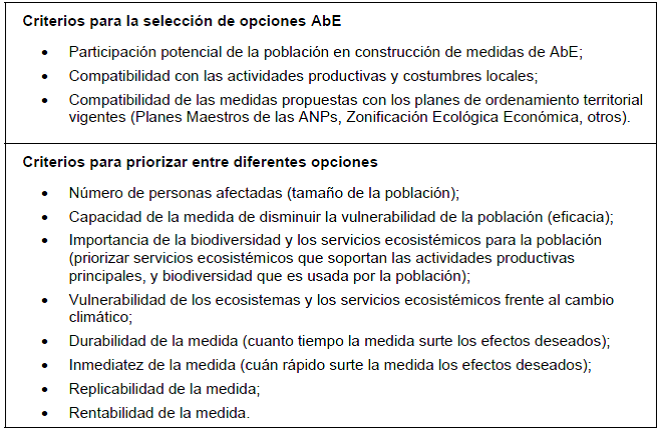

The objective of this building block is to define how to identify the EbA measures to be implemented in the field in order to increase the resilience of ecosystems and population to the adverse effects of climate change. This is important because it explores "how" and "with what" we are going to respond to the identified vulnerability. The identification of criteria for the definition, prioritization and principles for the selection of EbA measures is a tool that allowed clarifying doubts and to reflect, align and define concepts based on the review of relevant documentation, field observations, interviews and discussions with local actors and researchers. The set of criteria was organized into two sections (see gallery). It was first validated by SERNANP and experts and afterwards applied for the prioritization of the EbA measures. Once selected, the proposed measures were validated by the community. We have experienced that it is important not only to validate the results, but also to prioritize the measures in a participatory manner with the communities.
- Have a set of criteria for the selection of EbA measures that allows a prioritization of possible measures and helps to exclude those that are not EbA.
- Commitment of local actors who will participate in implementation and decision-making.
- Prioritized actions should focus on ecosystem services that are key to the livelihoods of local populations.
- SERNANP and communities working in a coordinated manner.
- When defining EbA measures, the interlinkages between the population and ecosystem services in the area should be considered. If we choose to work with ecosystems that do not provide ecosystem services for the livelihoods of the target communities, the interventions will not be sustainable. Furthermore, social structures and the strength of local organizations are important.
- It is important that from the very beginning, the project was considered part of SERNANPs activities. While the project has a limited time span in the area, SERNANP is a permanent actor. Once the project ends, SERNANP will be in charge to support, advice and monitor the activities carried out by the communities.
- It requires commitment and willingness of the actors to establish agreements for the sustainability of the processes.